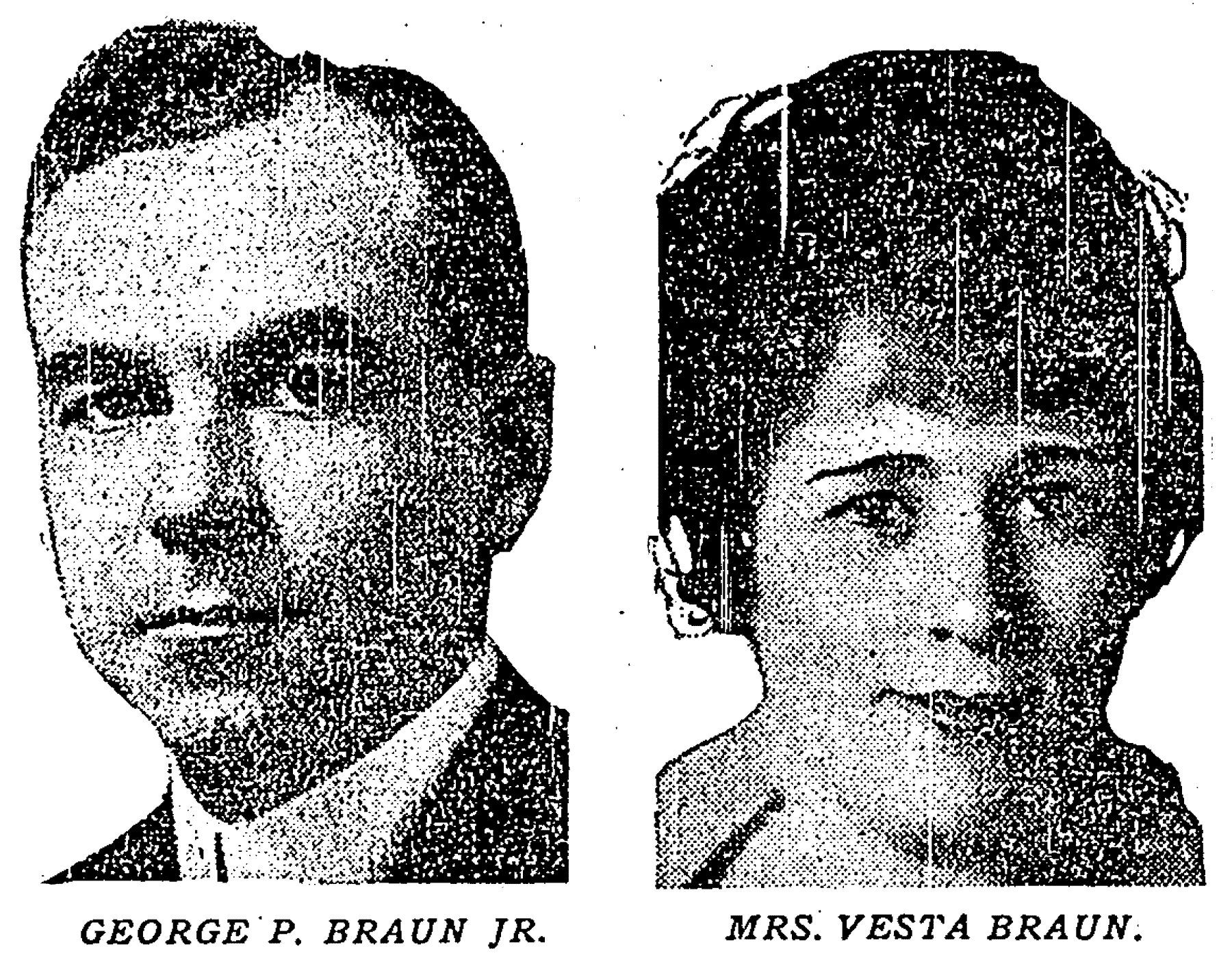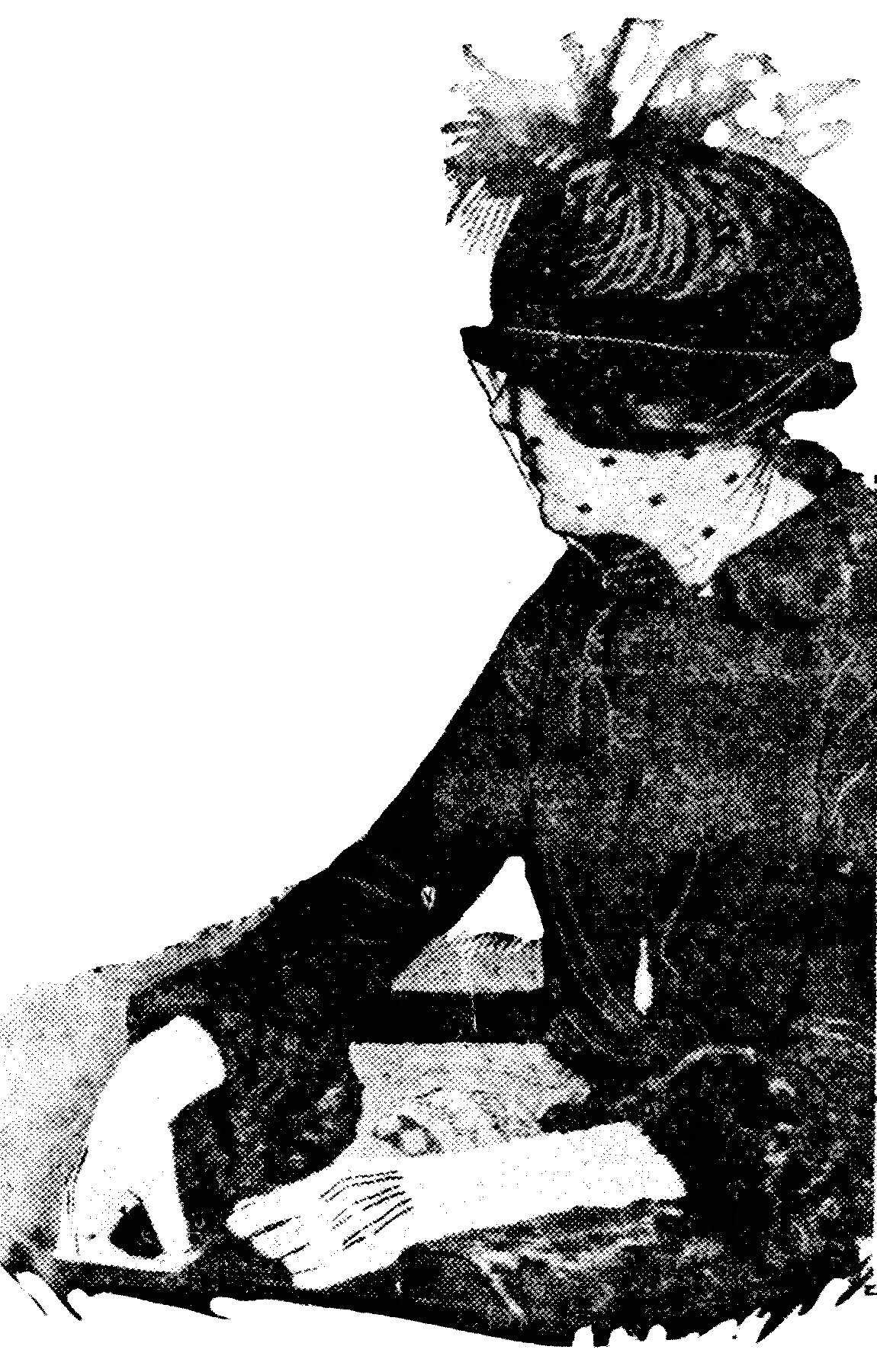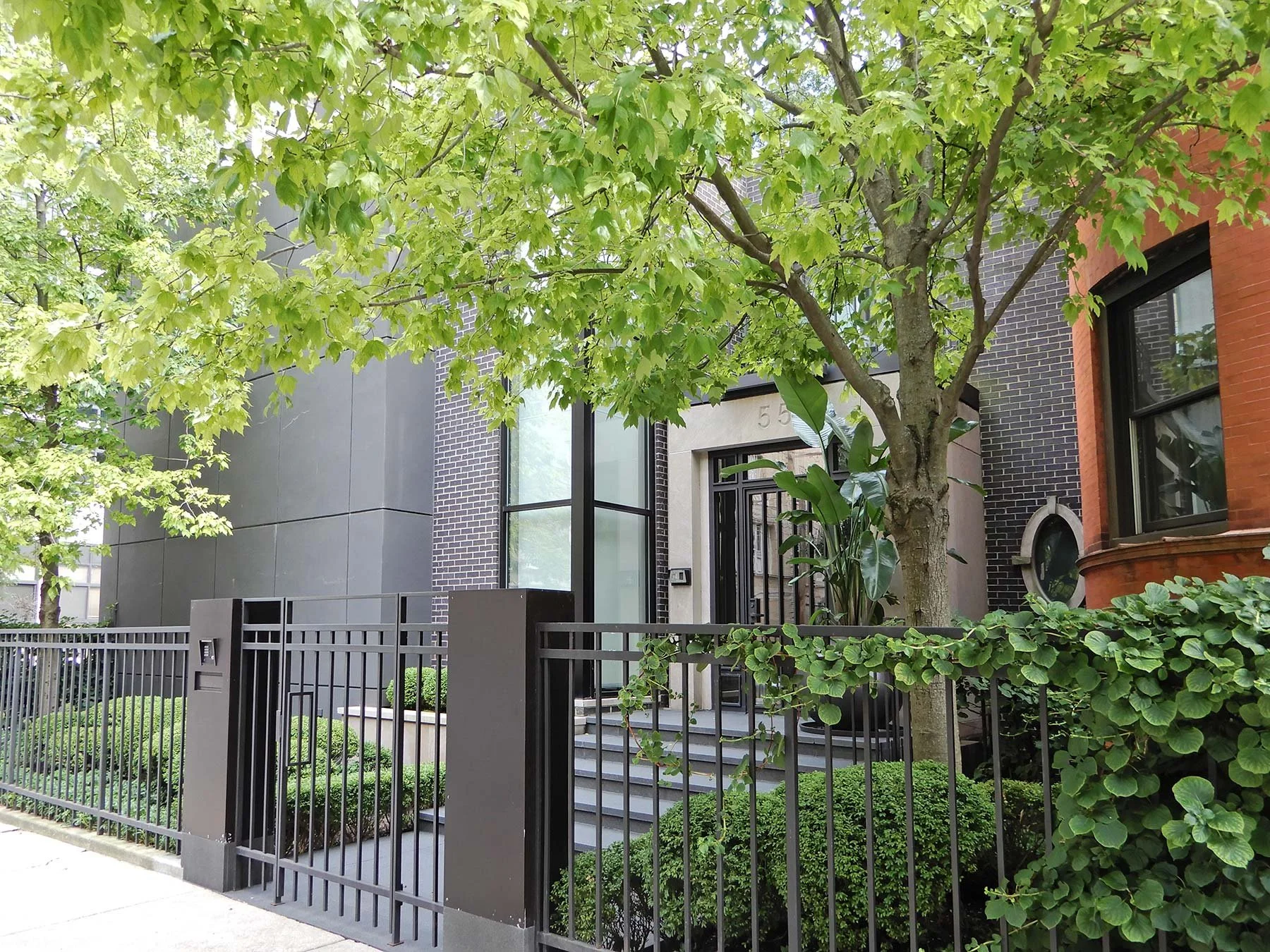I uncovered a colorful story that took place in the 1920s in this stately Tudor style residence at 1221 N. Astor Street.
Sometimes, when I’m strolling through a historic neighborhood, I try to imagine the early residents of an old house and daydream about the private dramas that may have occurred there. While researching the Tudor style residence at 1221 N. Astor Street, I uncovered a colorful story that played out behind its lovely façade. I’d like to share this this (not so private) drama with you.
Advertisement for Braun & Fitts Oleomargarine, Chicago Tribune, October 19, 1898.
George P. and Vesta Braun were the original owners of 1221 N. Astor Street. Born and raised in Chicago, George P. Braun, Jr. (1885-1968) was the son of George Philip Braun, Sr., a German immigrant who owned an oleomargarine company. Due to the enormous success of his business, George P. Braun, Sr., became a millionaire. By the mid-1890s, he and his wife, Martha Vail Braun, lived comfortably in a luxurious home on N. La Salle Street with their teenage son George, Jr., young adult daughter Mabel, and four servants. The Brauns, like other wealthy Chicagoans, spent their summers at Lake Geneva, Wisconsin. After staying at a resort called Kaye’s Park for a couple of summers, George P. Braun, Sr., built a second home on Lake Geneva’s south shore. According to the Chicago Tribune, he “graded up the grounds” and constructed “a beautiful place, with all the necessary equipments [sic] and facilities for the enjoyment of the summer season.”
Residence of George P. Braun, from “The Echoes as Beautiful Today as in Yesteryear.”
The McFatrich family lived at 3408 S. Prairie Avenue before moving to the Gold Coast around 1907. Photo by Julia Bachrach.
Another affluent family that summered in Lake Geneva were the McFatriches. A prominent eye doctor, James Burton McFatrich, his wife, Vesta Putnam McFatrich, and two daughters, Vesta and Florence, moved from an elegant row house on Chicago’s S. Prairie Avenue to a luxury apartment on N. Astor Street in the early 1900s. The family spent their summers at Lake Geneva’s Congress Club.
Apparently, the younger Vesta McFatrich was active in the social life of the Wisconsin resort town. For example, in 1907, the society pages reported that Miss Vesta McFatrich and her friend Josephine Powers helped raise money for charity by organizing a Punch and Judy show in Lake Geneva. A few months later, the same newspaper hinted that Vesta had secretly become engaged to George P. Braun, Jr. The bachelor, who had studied at Yale University for a few years without completing his degree, had inherited considerable wealth from his father who died two years before.
Miss Josephine Powers and Miss Vesta McFatrich, The Chicago Inter-Ocean, July 28, 1907.
When Dr. James McFatrich heard of his daughter’s engagement, he did not seem very pleased. In January of 1908, the Chicago Tribune suggested that the engagement between Vesta McFatrich and George P. Braun, Jr., would soon be announced. A reporter questioned Dr. McFatrich about the betrothal, and he replied, “It does not exist and never will.” Notwithstanding her father’s denial, Vesta and George were married in her parents’ home at 1362 N. Astor Street in March of 1908. Despite Dr. McFatrich’s misgivings, he and his new son-in-law soon went into business together. The eye doctor formed an investment firm called McFatrich Land Company, appointing George P. Braun, Jr., as its president.
The McFatriches lived in a luxury apartment in this building at 1362 N. Astor Street. Courtesy of Chicago History Museum, ICHI-15262.
During the early years of their marriage, George and Vesta Braun lived in a rented house on E. Chestnut Street. Deciding to build their own Gold Coast home, they soon purchased a lot on the east side of N. Astor Street, only a block away from Vesta’s parents’ apartment. By early 1912, the Brauns had commissioned architect John E. Youngberg to design a spacious three-story residence on the lot. The Swedish-born Youngberg grew up in Iowa. Receiving his architectural training in the Kansas City branch office of Burnham & Root, he moved to Chicago to help the firm with plans for the 1893 World’s Columbian Exposition. After the fair, Youngberg travelled abroad and studied at the Ecolé des Beaux Arts in Paris. He then returned to Chicago and opened his own office in 1896. Along with designing large residences for well-to-do clients, he developed a stately single-family home at 1224 N. Astor Street as a speculative investment in 1909.
Architect John E. Youngberg designed this residence at 1224 N. Astor Street. Photo by Julia Bachrach.
The Brauns likely admired the house Youngberg designed at 1224 N. Astor Street. For their lot, which was kitty-corner across the street, he produced a brown brick, limestone-trimmed Tudor Revival mansion that provided a distinguished addition to the street. The three-story, twelve-room house also offered plenty of space for their growing family which then included a young son, George P. Braun, III.
Vesta and George P. Braun’s house was designed and built in 1912. Photo by Julia Bachrach.
These headshots of George P. Braun, Jr., and Mrs. Vesta Braun were published in the Chicago Tribune on January 21, 1922.
In 1914, George and Vesta Braun had a second son, whom they named James Burton Braun. At the time of the 1920 U.S. Census, the family was living in their fine home with a butler, a cook, and a governess. The Brauns were often mentioned in local society pages. But all was not well. In August of 1921, Vesta took her boys and moved in with her widowed mother, having suffered her husband’s “quarrelsome attitude and abusive acts while intoxicated,” as she told reporters. George then took up residence at the University Club. Vesta heard through the grapevine that her husband planned to sell their N. Astor Street home without her consent. She feared that George could do this without much difficulty because only ten days after their wedding, she had granted him her power of attorney.
In January of 1922, George Braun had all the locks on the Astor Street house changed and hired a guard to prevent his estranged wife from entering. Vesta’s lawyer told her that as long as she was in physical possession of the house, George wouldn’t be able to sell it without her consent. So, she and her sister snuck into the home through a window and barricaded themselves in a third-story bedroom. To try to force them out, George Braun had the heat and water turned off. Vesta and her sister Florence camped out in the unheated home and stayed overnight. Neighbors snuck over with hot water bottles and food to help them. At 5 a.m. the following morning, George arrived at the Astor Street house with a large moving truck. Movers carried out most of the furniture while Vesta and her sister stayed locked in the upstairs room. Later that day, George sent over Pinkerton detectives, who barred anyone from seeing Vesta—even her own attorney.
“Home on Gold Coast in Siege as Wife Sues: Mrs. G.P. Braun Jr. Asks Divorce,” Chicago Tribune, January, 21, 1922.
“It’s Different Now,” Chicago Tribune, January 24, 1922.
A front-page Chicago Tribune story entitled “Home on Gold Coast in Siege as Wife Sues: Mrs. G.P. Braun Jr. Asks Divorce” explained that Vesta Braun had refused to leave the premises unless her husband agreed to earmark the sale proceeds for her two sons. The article suggested that despite her husband’s substantial wealth, Mrs. Braun had been supporting the family with money from her trust fund.
Newspapers across more than a dozen states covered the Astor Street “siege.” After Vesta and her sister spent roughly 40 hours holed up in the freezing cold bedroom, the standoff ended when Mrs. Braun’s lawyer obtained an injunction preventing her husband from selling the house or its furnishings. A Lincoln, Nebraska, paper reported that the “beleaguered” wife evacuated the Gold Coast mansion “shivering and cold but victorious.”
“Display Ad – Household Goods,” Chicago Tribune, May 25, 1924.
Apparently, Vesta Braun and her boys moved back into 1221 N. Astor Street in the winter of 1922. According to some accounts, the Brauns reconciled at this time. If so, the reconciliation didn’t last long. In May of 1924, the Chicago Tribune reported that a divorce had been granted to the “Heroine” of the “Astor St. Siege.” Vesta Braun soon auctioned off the furnishings and other contents of her Gold Coast home, and the Astor Street house was sold. Vesta and her sons moved into a lovely townhome only a half-block away at 30 E. Scott Street. On August 1, 1924, the Tribune announced that Vesta Braun and William M. Scudder were quietly married with a small ceremony in Braun’s Scott Street home. A Harvard University graduate, Scudder had been a member of Theodore Roosevelt’s Rough Riders during the Spanish-American War. He was a successful businessman who also had a first marriage that ended in divorce. After a six-week honeymoon, the Scudders moved into Vesta’s Scott Street home and lived there with her two sons and three domestic servants. The couple seems to have had a harmonious marriage, which lasted until William Scudder died in 1942. Vesta Scudder continued to receive plenty of at attention from society pages even after she became a widow.
Vesta Braun purchased 30 E. Scott Street in May of 1924 and married William M. Scudder there a few months later. Photo by Julia Bachrach.
To build the Park Astor Condominiums at 1515 N. Astor Street, a beautiful historic residence was destroyed in the late 1960s. Photo by Julia Bachrach.
By the time Vesta Braun Scudder passed away in 1967, Astor Street was in the midst of a different kind of drama. The robust Post-War housing market and the area’s desirability had triggered a new era in which lovely historic residences gave way to modern high-rises. For example, the 26-story Park Astor Condominiums replaced a sumptuous 1911 mansion in 1968. The following year, a developer acquired the Brauns’ Astor Street house. He soon announced plans to raze both this and an even older mansion next door at 1223 N. Astor Street and replace them with a high-rise condominium structure.
In the early 1970s, as the new Astor Street owner tried to presell condos to raise enough capital for his project, community opposition was growing. Some area residents lobbied the City to designate a landmark district to protect the neighborhood’s historic character. Chicago’s landmarks ordinance was still relatively new, and this proved to be a controversial proposition. After much debate, Chicago’s City Council designated the 1200-1600 blocks of N. Astor Street as a Chicago Landmark District in December of 1975.
View of 1223 and 1221 N. Astor Street. Photo by Julia Bachrach.
Cognizant that the condo high-rise project would not fly, the property owner presented a new proposal. He would raze the two mansions and replace them with four townhouses. He hired renowned architect Harry Weese to design the proposed low-rise structures in a modern version of the Georgian Revival style to better fit in with the scale and appearance of the surrounding historic neighborhood. This proposal also failed to receive City approvals.
The modern house at 55 E. Scott. Photo by Julia Bachrach.
In 1977, the owner finally came up with an alternative that would save the two Astor Street mansions. Obtaining historic preservation easements from the Landmarks Commission, he agreed to remodel the 1221 and 1223 N. Astor Street houses. The project involved subdividing the lots of the older homes so that he could develop a new house around the corner at 55 E. Scott Street. Along with using rear and side property from the adjacent Astor Street residences, the modern home also incorporated portions of the 1223 coach house. So, there was a happy ending to both dramas on Astor Street.

















